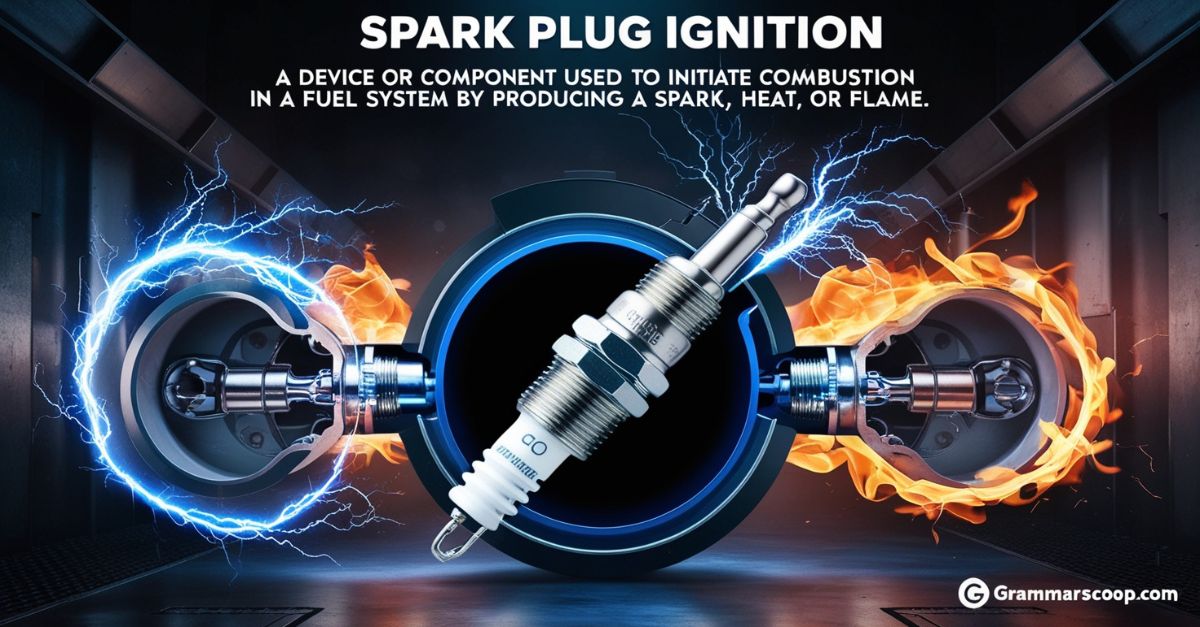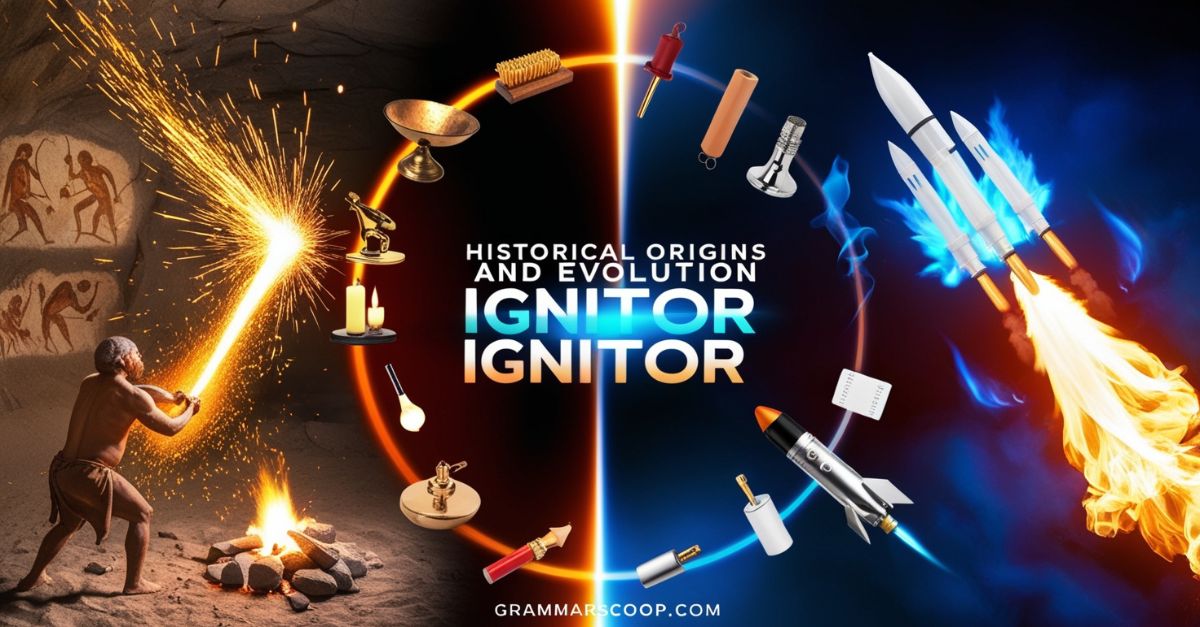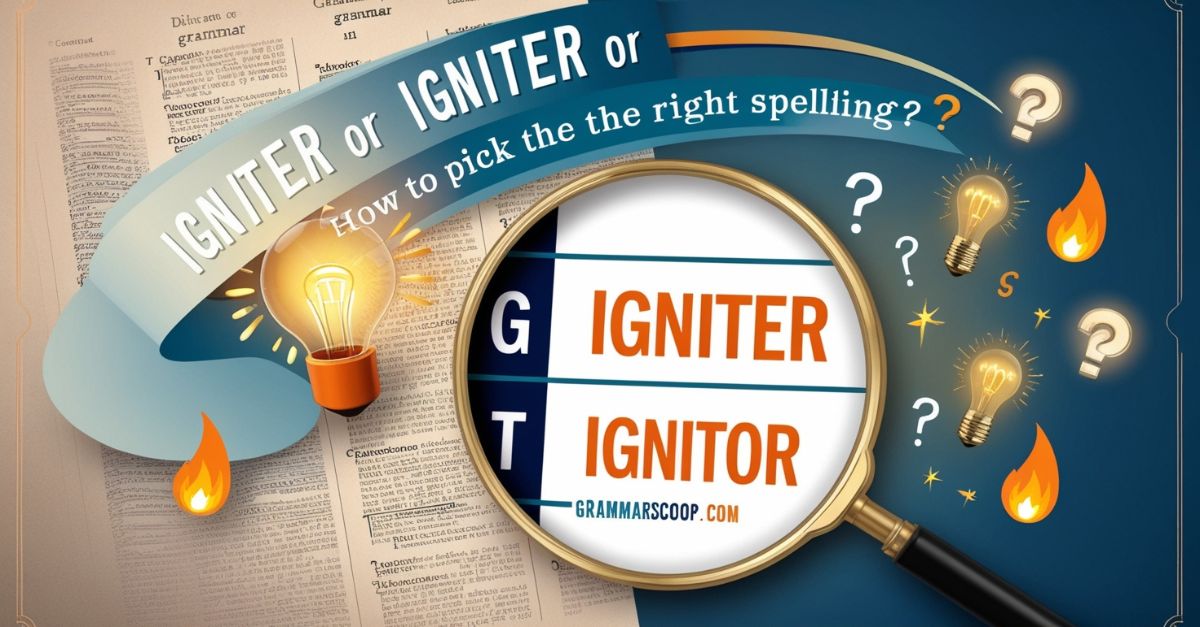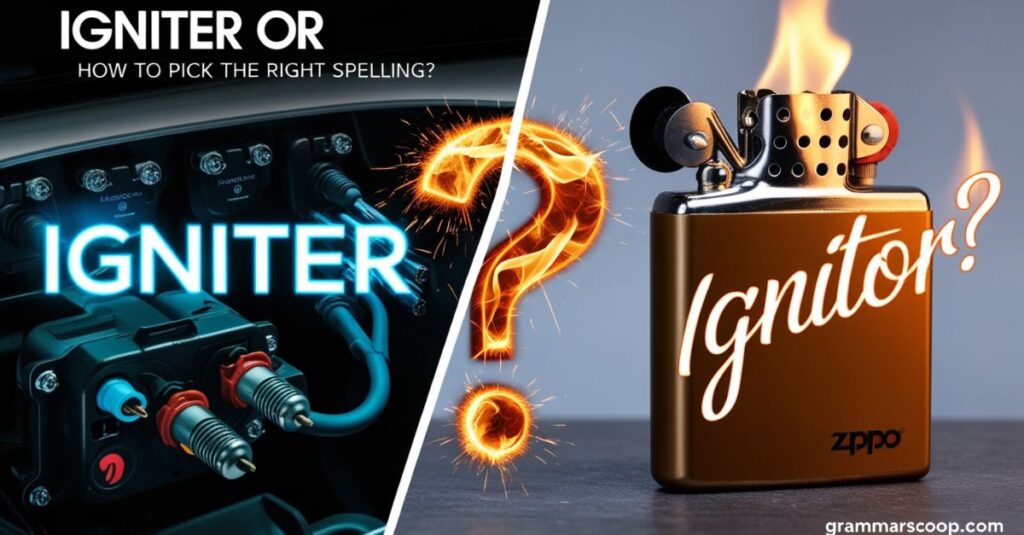Language can be tricky, especially when two words look almost identical but one is preferred in modern English. If you’ve ever wondered whether to write igniter or ignitor, you’re not alone. This confusion is common in technical manuals, product descriptions, and even academic writing. The good news? There’s a clear answer but it also depends on context.
In this article, we’ll explore the spelling debate, origins of the words, industry usage, real-world examples, and which one you should use to stay accurate and professional.
Quick Summary
Choosing between igniter or ignitor comes down to modern usage and audience. Igniter is the correct and widely accepted spelling in American English and global technical writing, recognized by major dictionaries and style guides. Ignitor, while still found in some legacy military, aerospace, and engineering documents, is considered a variant and isn’t recommended for formal communication. Both words describe the same type of device used to create a spark or heat source to start combustion, whether in engines, stoves, or industrial equipment. For clarity, professionalism, and consistency, always choose igniter unless quoting or referencing a brand or specific document that uses ignitor.
Understanding the Spelling Dilemma
The mix-up between igniter vs ignitor isn’t just a spelling slip, it’s the result of history, geography, and industry habits. Many people assume both are equally correct because they look and sound almost identical. In reality, igniter dominates modern usage, while ignitor lingers in certain niche contexts.
One major factor is regional spelling variation. In American English, igniter is the preferred form listed in dictionaries and used in academic, journalistic, and technical writing. British English also leans toward “igniter,” though some technical archives still contain “ignitor.” Older U.S. military and aerospace manuals helped keep the alternate spelling alive.
At first glance, igniter or ignitor seem interchangeable. Both refer to a device that starts a flame or spark to trigger combustion. The problem arises from:
- Regional preferences in spelling
- Industry-specific terminology
- Historical shifts in language
- Branding and marketing choices by manufacturers
In American English, the spelling igniter is dominant and widely recognized by dictionaries, technical writers, and safety standards. However, ignitor still appears in certain industries particularly in older military, aerospace, and engineering documents.
Key Fact: In modern usage, igniter is the correct and most widely accepted spelling.
Definitions and Meaning
In standard English, an igniter is a device that initiates combustion by producing heat, a flame, or a spark. It can also refer to a person who sets something on fire, though this usage is rare in modern contexts. From gas stove igniters to jet engine ignition systems, the term is widely recognized and accepted in both technical and everyday language.
The spelling ignitor, while describing the exact same thing, is far less common. It appears mainly in certain technical contexts, such as aerospace, military equipment manuals, or older engineering specifications. In these cases, the term survives largely due to tradition, legacy documentation, or brand naming, rather than current linguistic standards.
Both igniter and ignitor serve as nouns for a device or a person that ignites something whether that’s a spark plug in an engine, a pilot light in a furnace, or a pyrotechnic charge in a rocket booster. The difference lies in acceptance: igniter aligns with modern language norms, while ignitor remains a historical or specialized alternative.
Before choosing between igniter or ignitor, let’s clarify what they mean.
Igniter (preferred spelling):
A device or component used to initiate combustion in a fuel system by producing a spark, heat, or flame.

Ignitor (alternate spelling):
A less common variant of “igniter,” sometimes used in specialized technical contexts.
Examples of devices called igniters:
- Gas stove starters
- Aircraft engine igniters
- Rocket motor ignition systems
- Furnace pilot light igniters
- Automotive spark systems
The meaning is identical, but the spelling choice can influence how professional your text appears.
Which Spelling is Correct?
If you’re writing for general audiences or following formal style guides like AP Stylebook, Chicago Manual of Style, or Merriam-Webster, you should use igniter.
Authority References:
- Merriam-Webster lists “igniter” as the main entry and “ignitor” as a variant.
- Oxford English Dictionary prefers “igniter” in modern entries.
- NASA and U.S. Department of Defense documents still occasionally use “ignitor” for legacy equipment references.
Rule of Thumb: Use igniter unless you are quoting a specific document, brand name, or technical specification that uses “ignitor.”
Historical Origins and Evolution

The story starts with Latin’s fiery contribution to English the root ignis, meaning “fire.” From it came ignite, a verb first recorded in the 1600s, describing the act of setting something alight.
By the late 19th century, industrialization created the need for a noun describing tools that could reliably start combustion. The earliest documented spelling was igniter, matching the standard English pattern of turning verbs ending in -ite into nouns ending in -er.
Then, in the early 20th century, ignitor entered the scene. Linguists believe this alternative took hold because:
- American English already favored -or endings in words like motor and advisor.
- Technical communities, especially the military and engineering sectors, codified “ignitor” in early blueprints and equipment labels.
Over time, igniter gained dominance in education, publishing, and consumer markets. By the mid-1900s, dictionaries and style guides identified it as the preferred spelling. Ignitor became niche, surviving in legacy documentation and a few specialized fields.
| Timeline | Spelling in Use | Context |
|---|---|---|
| 1600s | ignite | General verb meaning “set on fire” |
| Late 1800s | igniter | First noun form, technical & general usage |
| Early 1900s | ignitor | Alternate spelling in US military & industry |
| Mid-1900s–present | igniter (dominant), ignitor (variant) | Mainstream English vs. legacy technical docs |
Synonyms for Igniter
In technical writing, using synonyms can improve clarity and avoid repetition.
| Synonym | Best Used In |
|---|---|
| Spark plug | Automotive, small engines |
| Fire starter | Camping, survival gear |
| Flame thrower | Military tech, not household items |
| Lighter | Everyday language |
| Ignition device | Broad technical contexts |
Examples in Real-World Context
Here’s how each spelling appears in actual usage:
Correct, modern usage:
“The technician replaced the igniter in the gas furnace to restore heat.”
Older technical usage:
“The rocket’s solid-fuel ignitor was tested under extreme temperature conditions.” (U.S. Air Force technical manual, 1965)
Brand-specific usage:
“Buy the TurboSpark™ Ignitor kit for high-performance engines.” (Manufacturer trademark)

Practical Applications
Igniters and ignitors play a crucial role in safety, efficiency, and performance across industries.
Common applications:
- Gas appliances: stoves, ovens, heaters, grills
- Automotive engines: initiating combustion in cylinders
- Aerospace: starting rocket motors or jet engines
- Industrial furnaces: igniting kilns and boilers
- Military systems: firing pyrotechnics and explosives
Case Study:
In NASA’s Apollo Program, the term ignitor appears in technical manuals for the F-1 rocket engine. Modern spaceflight documentation, however, uses igniter. This shows how legacy terminology persists in archival records but adapts in current projects.
Side-by-Side Comparison Table: Igniter vs Ignitor
| Feature | Igniter (Preferred) | Ignitor (Alternate) |
|---|---|---|
| Dictionary Recognition | Yes | Variant only |
| Formal Writing | Recommended | Not recommended |
| Technical Manuals | Common | Occasional |
| Regional Usage | Global | Mostly U.S. legacy |
| Brand/Trademark Use | Rare | More common |
Explore further:
- Sense Vs Since: A Clear Guide to Choosing the Right Word
- Than vs Then: Fixing Everyday English Errors
- Re-sign Vs Resign? Understand the Proper Usage of Each
- Excell or Excel: What is the Correct Spelling?
- Busses Or Buses: What’s the Proper Plural of Bus?
Conclusion
Igniter or Ignitor In almost all cases, igniter is the spelling you should use. It’s the standard in dictionaries, technical documentation, and industry guidelines. Ignitor survives mainly in legacy documents, trademarks, or niche technical contexts. Choosing igniter will make your writing clearer, more professional, and easier to understand for a global audience.
FAQs About Igniter or Ignitor
- Is it spelled ignitor or igniter?
Use igniter for modern, formal writing. Ignitor is a variant used rarely today.
- What is an igniter?
A device that starts a fire or combustion by producing heat, a flame, or a spark.
- Is it ignitors or igniters?
Both are valid plurals, but igniters is preferred.
- What is the meaning of ignitera?
“Ignitera” isn’t standard English, it may be a brand name or misspelling.
- What is a gas ignitor?
A component in gas appliances that lights the fuel to create a flame.

Lisa Morris is a seasoned blogger and language enthusiast with a passion for making grammar simple and engaging. At Grammar Scoop, she shares clear, concise tips that help readers master the rules of English with confidence.






